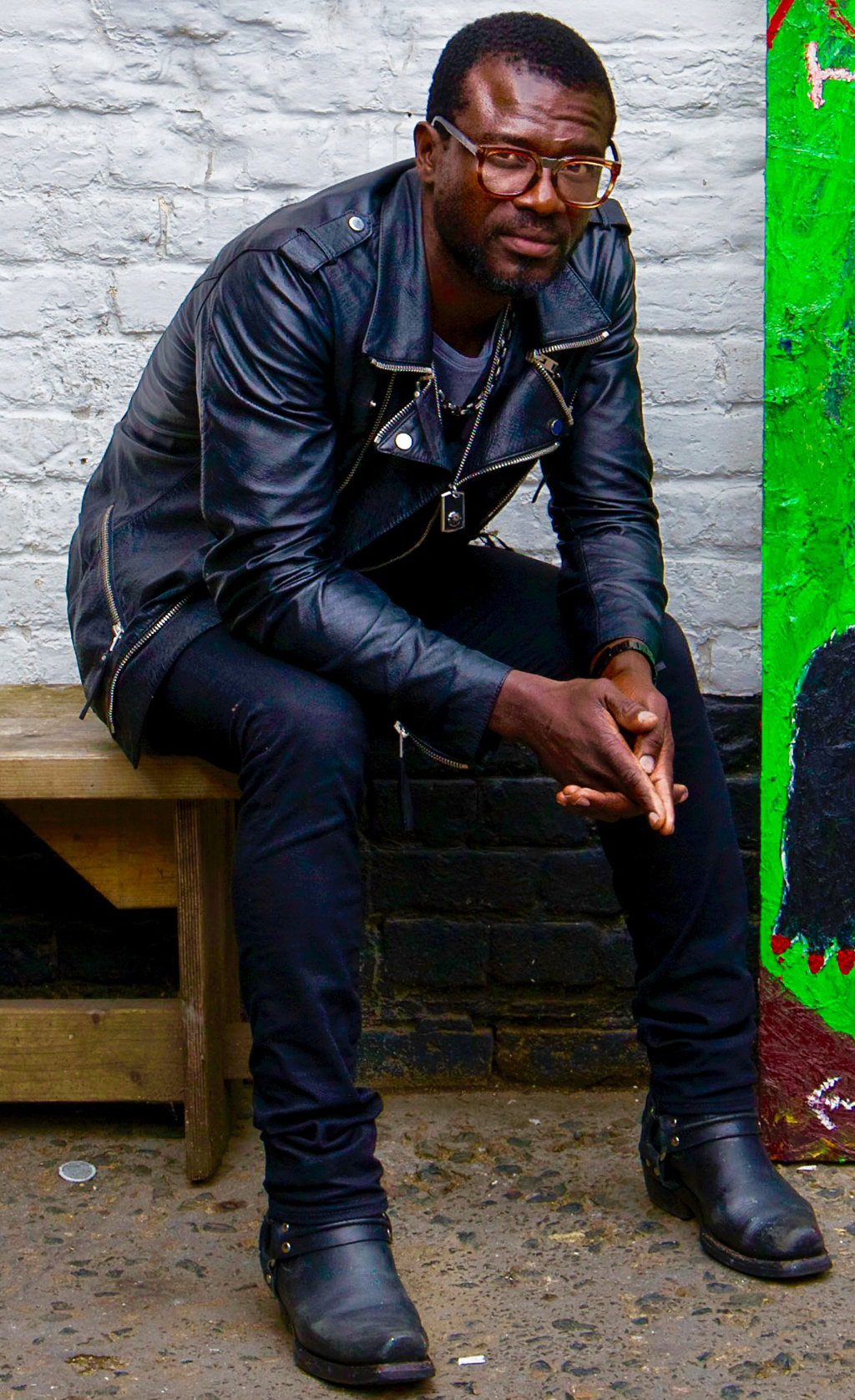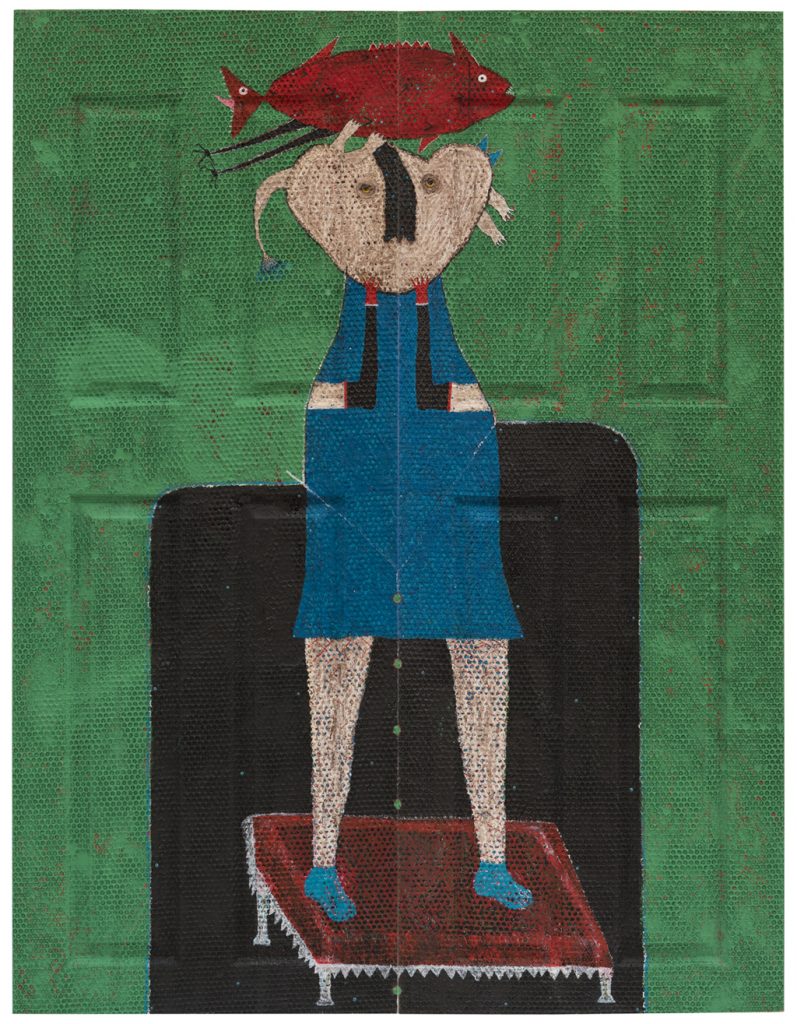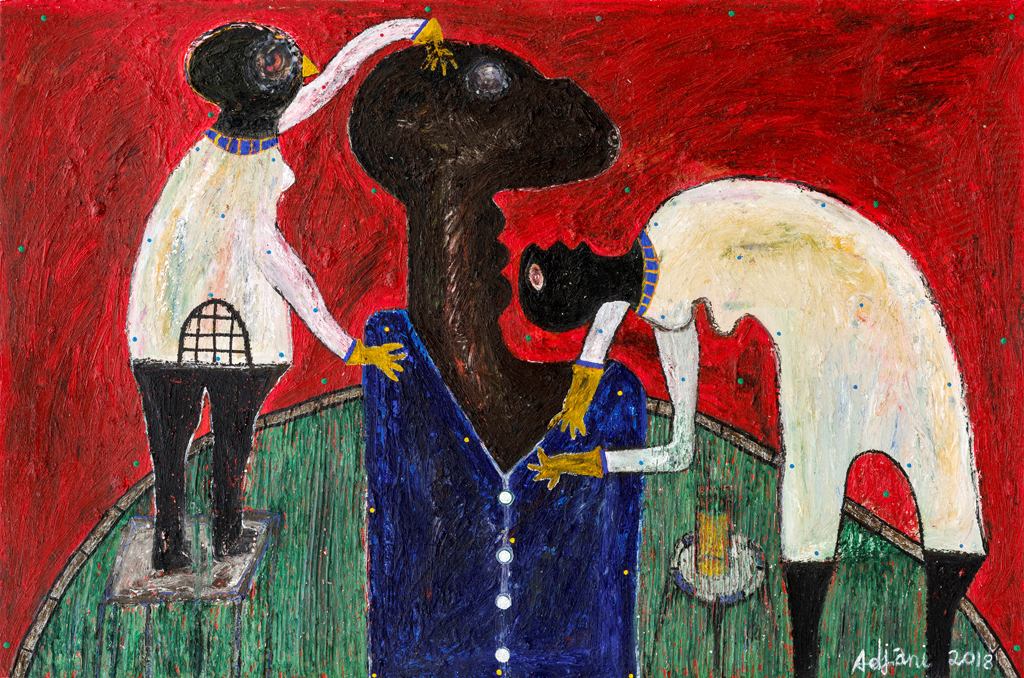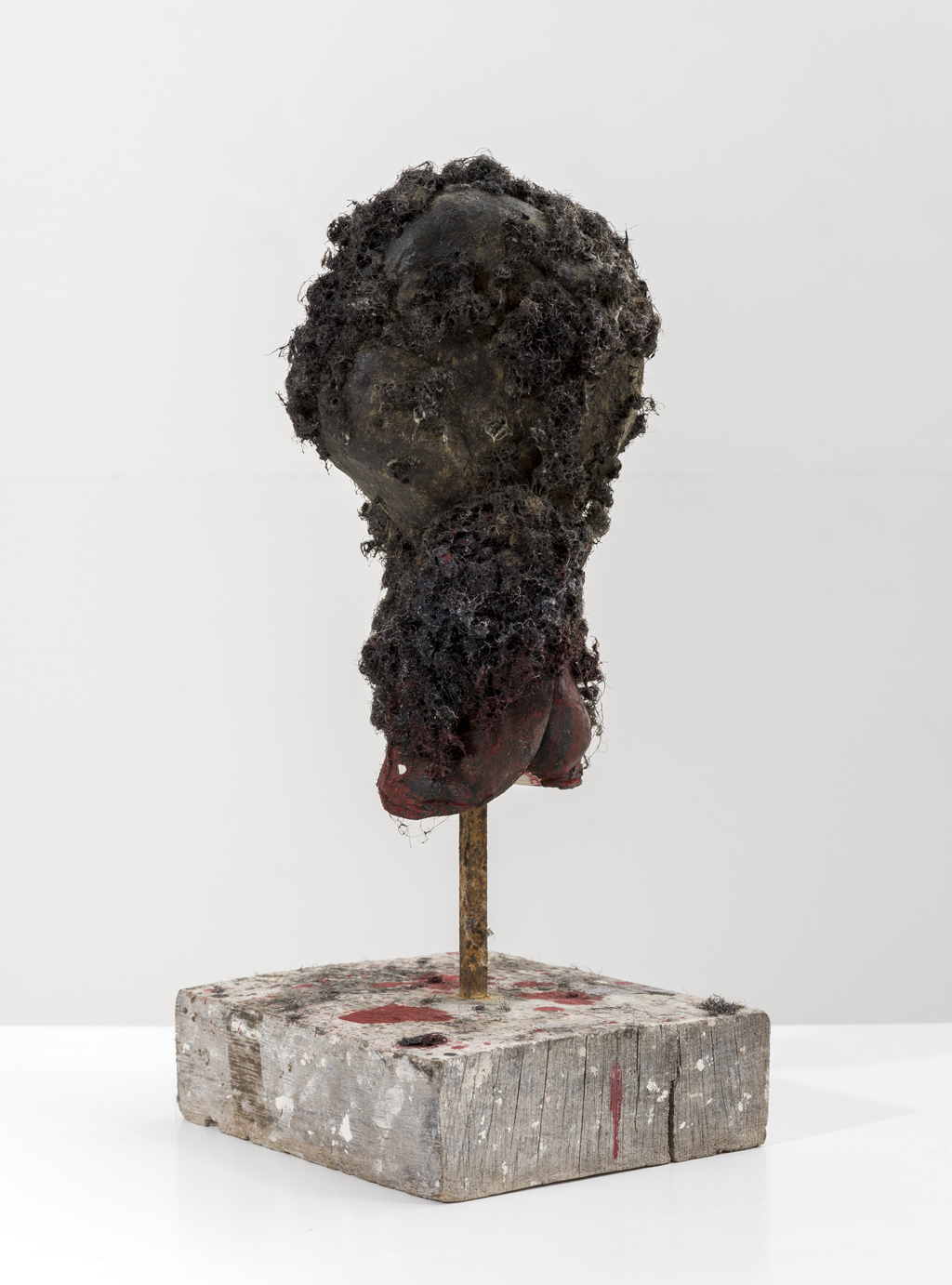London—Africa enjoys a vibrant, expansive contemporary art scene, but there is limited funding on the continent to provide local artists with residencies. Since 2017, we have worked to address the issue, supporting residencies for promising artists from the African continent at The International Studio & Curatorial Program in New York City.
This year, we announced a significantly increased residency, with expanded global visibility and professional development opportunities, the Ritzau Art Prize. The prize has been developed with 1-54, the leading international art fair with editions in London, New York, and Marrakech dedicated to contemporary art from Africa and its diaspora, and itself a sustainable, dynamic platform actively engaged in dialogue and exchange. Juried by a rotating panel of distinguished African artists and specialists, the prize is open to late emerging to mid-career artists whose work is being exhibited at the fair.
We are delighted to announce that Cameroonian painter and installation artist Adjani Okpu-Egbe (b. 1979), whose raw, expressive art investigates African colonial history and political activism, is the inaugural Ritzau Art Prize recipient.

Courtesy the artist
An interview with Adjani Okpu-Egbe
Q. Your artworks not only explore specific social and political movements. Would you talk about how your art reaches farther, functioning “as a call to rally support and resistance” as well as justice and solidarity? As you have said to other Afro-surrealists, “seek ye first the ‘woke’ realms of the objective part of their creative process.”
A. As artists, we have an inherent social contract with our communities and that is to dedicate aspects of our work to shed light on issues that affect our day to day lives in our various countries and the world. By doing this we get to indirectly show solidarity to those affected and at the same time help bring a diverse group of people together who could possibly contribute in seeking justice.
Art has immense potential to stir resistance against authoritarianism, rally support and seek justice and as such, if artists prioritise deploying it in that context, then that can only be an all-round good thing to everyone.
Q. A native of Southern Cameroon and an Afro-surrealist Expressionist, you suggest your “creativity to be both a mystical and metaphorical process.” May we ask you to talk about these facets of your inventive practice?
A. I am from Southern Cameroon, Ambazonia, and am a native of Kembong and Ndoi Batanga, the respective hometowns of my paternal and maternal lineages. Both my grandparents were chiefs, hence cultural custodians. My paternal grandfather was the head of the “Nyánkpè” secret society and the totem lived in his house. In 2010, I conducted research and made paintings alluding to the Nyánkpè secret society without prior knowledge about my grandfather’s deeper connections to the society.
It might just be a coincidence, but I do find it mysterious that I can sometimes create things that I don’t have a clear understanding of, only for it all to reveal itself at the end or a few years later. Sometimes I do not understand my own creativity. I do believe that I’m grounded in my understanding of who I am and why I’m here.
Q. Your work unfolds a range of issues and you employ a range of discarded and found materials. For example, in Takumbeng’s Creed, Ambazonian Fortress (Diptych) you used a found door as a ground, a non-traditional material but one whereas in all of your work, you evince a fluency and dexterity for composition. Talk about the use of doors in your work and their role and significance to you. How is the door a metaphor and how does it allow you to comment on issues?
A. We live in a time when the effects of climate change are visibly destructive on a global scale, and it’s important that we all do our bit in averting the situation. Recycling obviously plays an important role in that, so using discarded door panels and bubble wrap fulfills that purpose.
I use the door panels to comment on these issues, to help promote sensitization and activism that goes a long way in pressuring our governments to take action.
The doors have other significance. I come from a poor family and moved to the UK where from studying, to serving in the British Army, being the first black and African artist to be commissioned by BBC to give an artistic interpretation of the queen’s Diamond Jubilee on the River Thames on live TV in 2012, and to be able to show my work in respected spaces around the world, and now winning the 1-54 Ritzau Art Prize is a huge privilege that I cannot take for granted.
Obviously, this hasn’t come without serious challenges and doors slammed in my face, but the slammed doors remind me of the ones that have been opened, the ones that are half open … the ones which are opened but not welcoming, the ones that I’ve to keep knocking. It reminds me of difficulties and possibilities in life, hence the metaphorical connotation of “opened” and “closed” doors. On the other hand, the bubble wrap reminds me that in life, every problem comes with a solution, sometimes we just need to dig a bit deeper and exercise a bit more patience.

Photograph by Deniz Guzel; Courtesy Sulger-Buel Gallery
Q. The Coronation of Steve Biko (2018) is a highly energetic, full palette work on paper, and you take maximum advantage of the entire sheet, edge to edge. What role does paper play in your studio practice, and could you talk about working on Waterford paper, an English paper known for its natural, woolen surface and texture?
A. If an artist spends $700 on a linen, subconsciously, there’s pressure during the creative process — the work has to be good and that’s not a good sign.
However, working on paper brings a totally different experience. Probably because paper is subconsciously attached to the toilet, trash, or used as wrapping or packaging materials, and it’s more affordable. It has an ephemeral quality to it, and that makes the creative process less stressful because if in the end one doesn’t like it, it can simply be squashed and put it in the trash. I like to be free when working and nothing helps liberate me better than paper. I prefer Waterford because of its rich texture and it’s absorbent and archival qualities.
Q. How do the rich tones and various subjects in this work describe your response to the brutal killing and political murder of Mr. Biko, following his arrest for subversion in 1977?
A. The choice of colour plays a fundamental role in my work. In The Coronation of Steve Biko, the use of specific rich colours helps the work to stand out in a way that highlights colourful elements associated with Zulu culture. Biko was arrested purportedly for subversion and then brutally murdered while in custody in 1977 for challenging the Apartheid Regime in South Africa.
It’s impossible to discuss Steve Biko without mentioning his death. In The Coronation of Steve Biko, I’m not talking about his death. I’m more concerned about his legacy and the role of the women who stood by him throughout, but whose contributions are often relegated to the back. To me, Biko was coronated by these women as a little boy and his middle name Bantu, meaning “people” in Zulu, immediately denotes power, leadership, responsibility, selflessness and at the same time, vulnerability — something which I attempted at invoking in the title, the colours, texture, and the whole painting itself.

Photograph by Deniz Guzel; Courtesy Sulger-Buel Gallery
Q. A French Soldier‘s Trophy Head in Cameroon 1950’s/1960’s is a visually striking, free-standing three-dimensional object made of clay, an ancient and sensuous medium that is expressive and malleable, as well as metal, wood, and human hair. May we ask you to talk about this work that relates to political turmoil in Cameroon and Ambazonia, and your decision to employ clay and human hair?
A. The work was inspired by the brutal repression and genocide carried out against the Bamileke clan by French and Cameroon forces due to the former’s resistance to French colonial rule. It is estimated that about 60,000 to 75,000 Bamilekes where killed and some of them had their heads chopped off and kept by French soldiers as trophies. It is alleged that both men and women were sexually abused during the genocide, hence pubic hair and head hair, compose part of the material used in making the work.
It’s the first and only sculpture that I’ve created and there wasn’t any war in Cameroon in 2015 when it was made. At the time, my choice of clay was based on what was available in my tutor’s studio. The piece is now showing as part of my installation “The Foundation of Erasure” in Kuntsverein Museum, Braunschweig, Germany.

Photograph by Deniz Guzel; Courtesy Sulger-Buel Gallery
Q. You are the inaugural Ritzau Art Prize recipient which will include you traveling to New York City for a 90-day residency. May we ask how you intend to use your time and do you feel that residencies for artists are lacking on the African continent?
A. l am thrilled to be the inaugural winner of this prestigious prize, and I am much looking forward to going to New York in October and getting to work for three good months. Hopefully it facilitates the opening of more doors for me. I have a plan of what I intend to accomplish workwise. In virus-free times, New York is an amazing city. I want to take this opportunity to thank 1-54 Contemporary African Art Fair, ISCP, the prize donor and my London gallery for all their hard work and graciousness in making this come to fruition.
Note to readers: An expanded version of this interview is on 1-54.com.
Due to restrictions brought on by COVID-19, the prize announcement originally scheduled for May 7, 2020 at The Caldwell Factory in New York was made on 1-54.com. A special event for the artist will take place during the 2020 edition of 1-54 London, scheduled October 8 to 11.